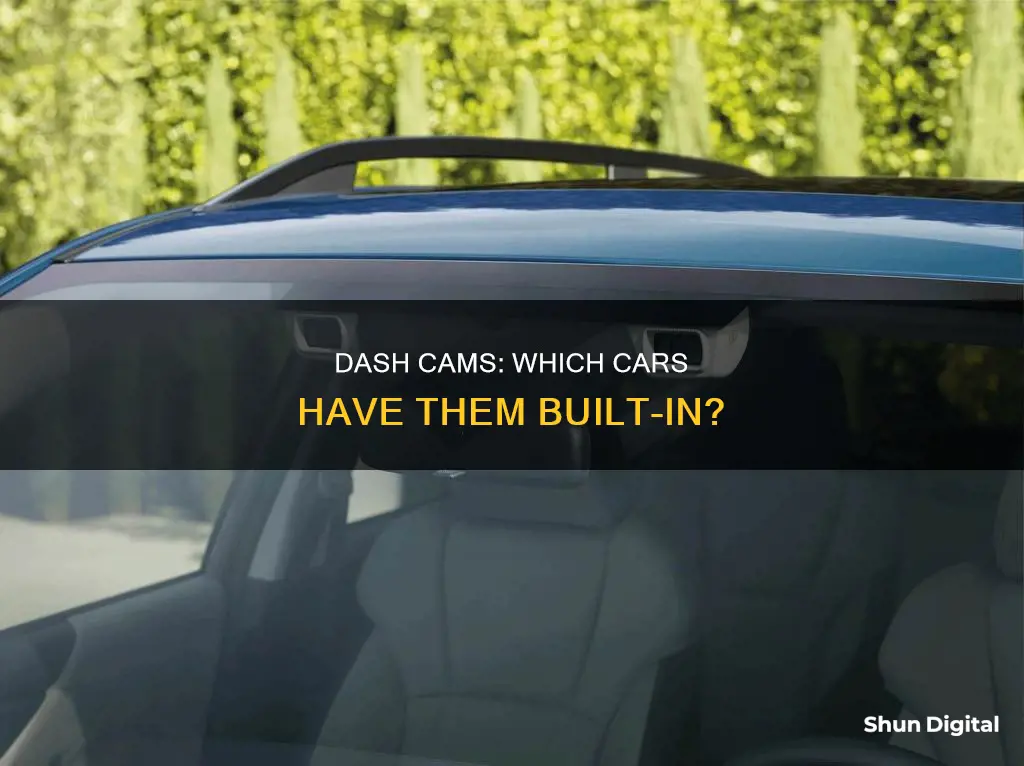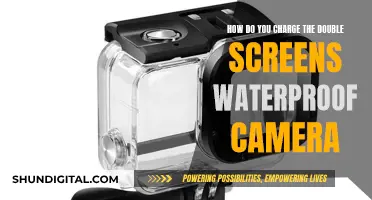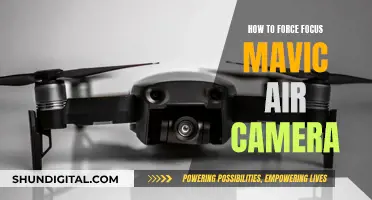
Dashcams are becoming a must-have accessory for drivers, and some car manufacturers are now offering vehicles with built-in dashcam functionality. These include Tesla, BMW, Subaru, Cadillac, Chevrolet, and Toyota. Tesla offers arguably the most sophisticated in-built dashcam functionality, with the ability to record from front, rear, and side cameras. BMW's Drive Recorder system can record from up to four cameras simultaneously and is available on select models equipped with its Operating System 7 or later. Cadillac's Surround Vision Recorder, offered on the 2016-2019 CT6 models, utilizes four exterior cameras but can only record from the front or rear view while driving, not both. Chevrolet's Performance Data Recorder, available on performance-oriented models like the Corvette and Camaro, records video and telemetry data, making it popular with car enthusiasts. Subaru's 'EyeSight' system, available on many of its vehicles, has two built-in dashcams near the rearview mirror for adaptive cruise control and lane-keeping assist. Toyota offers a Genuine Dash Camera as an optional accessory for several models, which automatically records and saves footage when an accident is detected.
| Characteristics | Values |
|---|---|
| Car Brands | Tesla, BMW, Subaru, Cadillac, Chevrolet, and Toyota |
| Number of Cameras | Up to eight surrounding cameras (Tesla) |
| Camera Positioning | Front and rear, or front wings below side mirrors (Tesla) |
| Footage Storage | USB stick, SD card, cloud |
| Footage Retrieval | Smartphone app, USB-capable device, SD card reader |
| Additional Features | Sentry mode, parking assistance, blind-spot monitoring, lane-keeping assist |
What You'll Learn

Benefits of built-in dash cams
There are several benefits to having a built-in dashcam in your car. Firstly, they can provide valuable evidence in the event of a collision, helping to establish liability and determine fault. This can be useful for insurance purposes and can help protect you from fraudulent claims. Built-in dashcams can also monitor driver behaviour, alerting drivers to dangerous habits such as harsh braking or sudden acceleration. Additionally, they can provide security against theft or vandalism when the car is parked, by detecting movement or impact and automatically recording. Built-in dashcams also offer a seamless integration with the rest of the car, without the need for dangling wires that come with aftermarket installations.
Another advantage of built-in dashcams is their ability to record special drives or road trips. With time-lapse and loop recording features, you can capture memorable journeys and scenic routes without constantly monitoring the camera. The footage can be shared with family and friends or used to create social media content.
In terms of safety, built-in dashcams can act as a silent witness, providing an impartial perspective in the event of accidents or police-motorist encounters. They can also help in monitoring young or new drivers, as well as deterring potential car thieves and miscreants.
Lastly, built-in dashcams with GPS functionality can provide additional benefits. They can track your location, speed, and even save you from false speeding tickets. In the event of an accident, the GPS data can assist emergency services in locating you quickly.
Unsticking Camera Battery Acid: A Step-by-Step Guide
You may want to see also

Cars with built-in dash cams
Dashcams are becoming a must-have accessory for drivers. They can be a silent witness in the event of a collision, providing video evidence of a traffic accident or violation committed by another motorist. They can also aid in fraud protection and young driver monitoring.
Some car manufacturers have started to offer vehicles with built-in dashcam functionality, often by repurposing the vehicle's onboard cameras that would usually be used for advanced driver assistance systems (ADAS) and other automated driving and active safety features.
Tesla
All new Tesla models, including the Model 3, Model Y, Model S, and Model X, offer built-in dashcam functionality. The system can record from front, rear, and two side cameras mounted on the front wings below the left and right side mirrors. In the event of a collision, the car automatically saves the last 10 minutes of footage. This feature can also be manually activated or triggered by the sound of the horn.
Tesla also offers a Sentry Mode, which silently guards the vehicle when it is shut down. If someone approaches or touches the car, or if it is bumped, the system starts recording, and the exterior lights begin flashing. With a software update and a Premium Connectivity subscription, Tesla owners can remotely view a live stream of their car's surroundings when Sentry Mode is activated via the Tesla mobile app.
BMW
BMW offers its Drive Recorder system on models equipped with Operating System 7 or later (also known as iDrive 7.0) when optioned with the surround-view camera package. The system can record from up to four cameras simultaneously. In the event of a collision, the Drive Recorder automatically saves 20 seconds of footage before and after the impact. The driver can also manually record up to 40 seconds of footage through the iDrive system.
BMW's Operating System 8 introduces a new anti-theft feature, where the system can automatically activate and save up to eight recordings if the car's anti-theft alarm is triggered. Some models, such as the iX, are equipped with an interior camera that will also activate and record in the event of an attempted theft.
Mercedes-Benz
Certain Mercedes-Benz models equipped with the MBUX infotainment system now offer dashcam functionality, including entry-level models such as the A-Class and SUVs like the GLE. However, the system can only record footage from its front camera, and recordings cannot be initially saved to onboard storage but require a USB stick or storage device. The system also offers a 'loop recording' feature, where the length of the video is limited to the available storage space before being overwritten.
Cadillac
Cadillac offers an in-built Surround Vision Recorder, featured in the 2016 to 2019 CT6 models. The system utilizes four exterior cameras to record video, which is saved onto an SD card located in the trunk near the spare tire. However, it can only record either a front or rear view while driving, not both simultaneously.
Chevrolet
Chevrolet includes their Performance Data Recorder (PDR) in performance-oriented models like the Corvette and Camaro. The PDR records both video and telemetric data such as speed, RPM, gear position, and G-force, making it popular with car enthusiasts. However, like the BMW Drive Recorder, it requires manual activation and deactivation, making it less ideal for documenting traffic accidents.
Subaru
Subaru offers the 'EyeSight' system in many of its vehicles, except the BRZ. EyeSight has two built-in dashcams near the rearview mirror, primarily used for adaptive cruise control and lane-keeping assist. Subaru has also been implementing automatic emergency braking into the EyeSight system. In the event of an accident, it records and retains 22 seconds of footage, but accessing this recorded footage is not straightforward and requires written permission or a subpoena.
Toyota
Toyota offers a Genuine Dash Camera as an optional accessory for several models, including the Sienna Hybrid, Venza, Prius, RAV4, Sequoia Hybrid, Camry, Highlander, Tundra, and Tacoma. The camera is activated by G-force sensors, even when the car is parked, and can be manually activated to record events of interest. It offers Parking Surveillance, which is triggered by G-force sensors, and can record for up to an hour after the vehicle is turned off.
Monitoring Surveillance Cameras Remotely: A Comprehensive Guide
You may want to see also

How to view dashcam recordings
There are several ways to view dashcam recordings, depending on the system you use. Here is a step-by-step guide on how to view dashcam recordings:
Using the Camera Display
Dashcams with built-in displays allow you to access and replay footage directly on the device. Simply navigate through the recorded videos using the controls and select the one you want to view. While this method is convenient, dashcam screens are typically small and may not provide enough detail for reviewing a road incident.
Using a Dedicated Mobile App
Many modern dashcams offer built-in Wi-Fi connectivity, allowing you to download and share footage easily. You can download the dashcam's dedicated mobile app from the app store, connect your smartphone to the camera's Wi-Fi network, and access the video library through the app. This method provides a seamless and intuitive way to view, download, and share dashcam footage.
Using a Computer
If you prefer to view your dashcam footage on a larger screen, you can connect the dashcam to a computer. Here are the steps to follow:
- Remove the Memory Card: Ensure your car is parked and the dashcam is turned off before removing the memory card.
- Insert the Memory Card into an Adapter: If you have a Micro SD card, insert it into the SD adapter that came with your memory card. If your computer has a built-in card reader that accepts Micro SD cards, you can skip this step.
- Insert the Memory Card into a Card Reader: Use a memory card reader to connect the memory card to your computer. If your computer has a built-in SD card reader, you can insert the card directly into the appropriate slot. Otherwise, use a USB memory card reader.
- Copy Video Files to Your Computer: Once the memory card is inserted, an "AutoPlay" window may pop up. Open the folder to view the contents of the memory card, which typically includes a folder containing your video files. If your dashcam has a software video player, you can use it to play the videos. Otherwise, select and copy the video files to a desired location on your computer.
By following these methods, you can easily view and access your dashcam recordings, allowing you to review incidents, share footage with relevant parties, and even upload interesting clips to social media platforms.
Troubleshooting Eufy Camera Charging Issues
You may want to see also

Pros and cons of dash cams
Dash cams are becoming an increasingly popular accessory for drivers. They can be a silent witness in the event of a collision and provide video evidence of traffic accidents or violations committed by other motorists. They can also be used to record fun road trips. While there are many advantages to having a dashcam, there are also a few disadvantages to consider.
Pros
- Reliable witness: Dashcams provide virtually rock-solid evidence that can help prove your case in the event of an accident. They can also capture traffic violations committed by other motorists.
- Fraud protection: Dashcam footage can aid your insurer in defending you against fraudulent claims, such as an accident being staged.
- Young driver monitoring: Dashcams that offer a view of the vehicle's interior can help parents monitor the behaviour of a teen driver.
- Added security: Some dashcam systems provide a parking mode, which activates the camera when it senses movement around the car or physical contact with the vehicle.
- Help with insurance claims: Dashcam footage can help expedite insurance claims by clearly establishing fault.
- Encourages safer driving: Being aware of the dashcam, drivers may be more inclined to follow driving rules and be more mindful of their driving habits.
- Recording special drives: Dashcams can be used to record memorable road trips or drives.
Cons
- Reliable witness: While dashcam footage can help your case, it can also be used as evidence against you if you are at fault in an accident.
- Privacy: Dashcam footage has the potential to invade your or someone else's privacy, especially when recorded inside the vehicle. Different countries have varying regulations concerning dashcams and privacy.
- Cost: Dashcams, especially those with additional features, can be quite expensive. Aftermarket units may also require professional installation, further increasing the cost.
- Memory card: Dashcams typically require an SD card with adequate storage space, which may need to be purchased separately.
- Provoke theft: A dashcam mounted in plain sight may attract thieves.
Overall, while there are some drawbacks to consider, the benefits of having a dashcam in your vehicle tend to outweigh the negatives.
What Shape Does Camera Focus Take?
You may want to see also

Dashcam features to consider
There are several features to consider when shopping for a dashcam. Here are some key factors to keep in mind:
- Resolution and Quality: Look for a dashcam with a high-resolution camera, preferably 1080p or higher. A higher pixel count will result in sharper images and more detailed footage, which can be crucial for evidential purposes.
- Channels: The number of channels determines the number of different camera views. A single channel provides a front view, while additional channels can offer rear or interior views. Consider how many channels you need to cover all the angles you want.
- Frame Rate: The frame rate refers to the number of images captured per second (fps). A higher frame rate results in a smoother video. Aim for a dashcam with at least 30 fps.
- Field of View: This refers to the breadth of the video image. Look for a dashcam with a wide field of view, ideally around 150 degrees, to capture a comprehensive view of your surroundings without distortion.
- Night Vision: Consider a dashcam with night vision or HDR (High Dynamic Range) capability to ensure clear and detailed footage in low-light conditions. This feature can be crucial for capturing important details such as license plates.
- Image Stabilization: While not essential, image stabilization can help steady the video during incidents, providing clearer and more stable footage.
- Storage Capacity: Ensure your dashcam has sufficient storage capacity to store important footage. Look for models that support large-capacity microSD cards, preferably 128GB or higher. Alternatively, consider a dashcam with cloud storage capabilities.
- Loop Recording: This feature allows the dashcam to overwrite the oldest footage when the memory card reaches its limit, ensuring continuous recording without the need for manual file management.
- Wireless Connectivity: Dashcams with Bluetooth or Wi-Fi connectivity can interface with your smartphone, allowing for easier control and management of footage. Wi-Fi connectivity also enables cloud storage and remote viewing of footage.
- GPS Functionality: GPS functionality allows your dashcam to record your vehicle's location and speed, which can be valuable information in legal disputes or for tracking and monitoring purposes.
- Built-in Display: Some dashcams have built-in displays, typically ranging from 2 to 3 inches in size, allowing you to review footage and adjust settings directly on the device.
- Audio Recording: Consider whether you want to capture audio along with video footage. This feature can be useful for recording conversations during traffic stops or other important sounds.
- Mounting Options: Decide between a suction mount or adhesive mount for your dashcam. Suction mounts offer more flexibility in placement and are easier to remove, while adhesive mounts provide a more secure and permanent attachment.
Alkaline Batteries: How Long Will Your Camera Run?
You may want to see also
Frequently asked questions
Built-in dashcams are seamlessly integrated with the car's system, offering a clean look without dangling wires. They also provide valuable video recordings of road events, which can be used as evidence in the event of a crash or for insurance purposes.
Tesla, BMW, Subaru, Cadillac, Chevrolet, and Toyota are some of the biggest brands that offer built-in or integrated dashcams in their vehicles. However, the availability and features of these dashcams may vary depending on the car model and region.
Built-in dashcams are typically integrated into the vehicle's system and power supply. They may be activated manually or automatically triggered by events such as collisions or suspicious activities around the car. The recorded footage can be stored on SD cards, USB sticks, or in the cloud.
Built-in dashcams may have limited recording capabilities compared to aftermarket dashcams. They often require specialist assistance for repairs and may not support motion detection in parking mode due to their direct connection to the vehicle's power supply. Additionally, privacy and legal concerns related to audio recording and data privacy have influenced some manufacturers to avoid including dashcams in their factory models.







